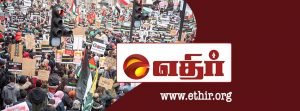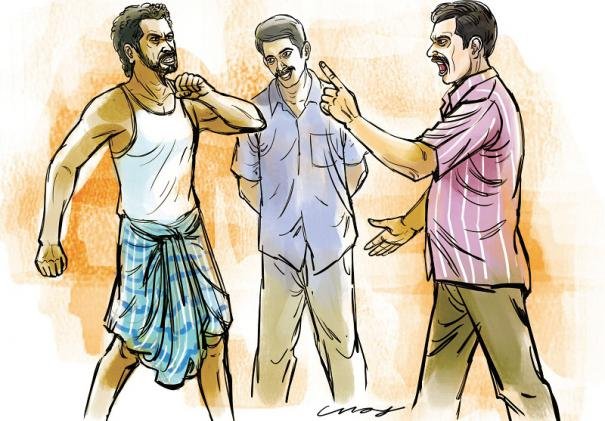Sri Lanka: One year since the uprising. A contribution to the ongoing debate on the way forward. Part1
It has been a year since the mass movement erupted in July 2022. The movement now faces a number of questions that need to be addressed. The development of future struggles and their victory depends on the lessons we learn from it and the development of a farsighted perspective and strategy. This is the first part of a series that aims to address some of these questions.
Socialist World
Part 1 -July 10 2023
One year has passed since the uprising that erupted on 9 July 2022, unleashing a wave of mass anger that paralysed the country and rendered the entire parliament obsolete. The spectre of this historic Aragalaya (Struggle) continues to haunt the political establishment in Sri Lanka. The current Sri Lankan regime has proven to be more repressive, undermining democratic rights and enacting draconian legislation, compared to any previous government, surpassing even the levels experienced during the war that ended in 2009.
In addition to proposing a draconian anti-terrorism act, the government has been pushing for further repressive legislation to control the media and suppress mass gatherings. Under the guise of proposed ‘rehabilitation’ laws, the Sri Lankan government will have the power to arrest and indefinitely detain anyone they believe may be involved in actions against the state. These individuals will be held in secure detention centres under the pretence of being ‘rehabilitated’. Furthermore, the new telecommunication and media act enables the government to block or ban any social media presence that is deemed to threaten their interests.
In February of this year, the Sri Lankan government imposed an effective ban on strikes by bringing a presidential decree to parliament preventing the right to strike in essential services. Obviously they are terrified at the thought of a repeat of the massive general strike on April 28 last year. They also prevented protest marches. Such measures, along with additional attacks on workers’ rights, may be implemented in the future. Every protest initiated by students and youth is met with brutal repression. Large numbers of police are deployed to these protests, either shutting them down, attacking and dispersing the protesters, or making arrests of key leaders. Authorities have even resorted to clashes with students within university premises to prevent any significant gatherings. Brutal force is consistently employed to suppress these protesters. Unlawful detention of student leaders and political activists has become a common occurrence in recent times. Those who are suspected of engaging in anti-government propaganda are summoned for interrogation by the secret services.
These measures have, thus far, helped to prevent the emergence of further mass struggle. However, the anger and discontent among the masses have not dissipated. All parliamentarians, including the president, have openly acknowledged their unpopularity among the people. There is a widespread understanding that if another mass action were to occur, it would likely bring an end to President Ranil Wickremesinghe’s rule. Recognizing the precarious nature of their power, which can be challenged by mass action at any moment, the government has been primarily focused on preventing such a situation from unfolding.
Nevertheless, a small segment of the urban middle class and capitalists, the elite, have given the Ranil government the ‘benefit of doubt’ due to its claims of having resolved the country’s problems. They propagate the notion that the economic disaster has somehow been averted. However, there is no real prosperity emerging, as they assert. The survival of the economy thus far has relied on various handouts from countries around the world and further borrowing.
****
The current government, led by Ranil, persistently attempts to persuade the masses that the country is on the right path to recovery and all is well. In one of his self-proclaimed “special statements” delivered at the end of May this year, Ranil asserted: “Sri Lanka is now ready to embark upon a journey of collective growth and prosperity.” He utilises the slight improvement from the dire state of bankruptcy that existed at one point to justify his arguments.
Although there has been a marginal decrease in astronomically high prices, they still remain at high levels, with inflation standing at 25.2%. It is important also to note that the relative improvement in the economy was not a direct result of the capitalist policies of the government. Some of the demands articulated in Aragalaya, such as non-payment of debt, organising the distribution of essential commodities such as fuel, etc., were forced on the government and played a part in reducing the burden. The relative stabilisation of the Sri Lank rupee and the availability of commodities have provided a sense of relief to some sections of the population who can still afford these high prices. However, the rest of the population is subjected to humiliation by the president and the entire cabinet, who expect them to endure the pain for at least the next 25 years. They are prepared to condemn an entire generation to misery in order to protect the profits and interests of the debtors.
The so-called ‘transformation roadmap’, consisting of five pillars outlined by the president, can be summarized as follows: cutting state expenditure and depriving public services; selling state-owned assets at low prices to private owners and increasing their influence in governance; changing labour relations and the tax system to accommodate the profit interests of private sector; and so on. None of these approaches are new, as they have been tried and failed in Africa and Latin America under the guidance of the International Monetary Fund (IMF). Sri Lanka will not be an exception to this rule.
Based on these so-called ‘structural reforms’ and the commitment to repay loans, the government has secured approximately $3 billion from the IMF, around $1 billion from India, $350 million from the Asia Development Bank, and $700 million from World Bank. Additionally, various aid packages from European countries and cheap oil from Russia have helped mitigate some shortages. However, these short-term ‘relief’ measures will not be sufficient to address the fundamental problems of the economy.
Sri Lanka has failed to attract significant investment, apart from vulture capitalists like the Adani group in India. According to Sri Lanka’s Export Development Board, exports decreased by 2% in March of this year compared to 2022. Despite the fact that the economy is still contracting at 3% and there has been a reduction in outflow, foreign reserves have only slightly increased to just over $2 billion. All of these economic indicators clearly expose the false claim that past problems have been resolved.
The fear of mounting public anger has prompted various forces to come to the aid of the Sri Lankan government. However, this support is unlikely to endure for long. As Shakespeare might have put it, “There is no remedy in consuming foreign purse. Borrowing only lingers and lingers it out, but the disease is incurable.” The conditions imposed on debtors are crystal clear: the population must suffer. Such demands for a ‘pound of flesh’ face opposition in many countries. Even bourgeois leaders, like Imran Khan in Pakistan and the right-wing Tunisian president Kais Saied, have recently rejected numerous conditions imposed by the IMF in exchange for small loans. However, in Sri Lanka, ‘Ranil-Rajapaksa’, the capitalist’s favoured merchant, not only welcomes these horrendous conditions but also promotes them as the “best economic” policies for the country.


















